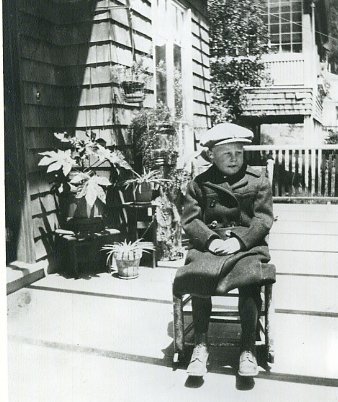The Jackals vs. the Banker
 Saturday, May 19, 2012 at 01:49PM
Saturday, May 19, 2012 at 01:49PM By Larry Clinton, President
We recently reprinted a memoir by Sausalito legend Swede Pedersen about his boyhood adventures in the bootlegging trade. Here’s another first person account of those days, including a run-in with local nabob Charles Templeton Crocker:
The old town gang, consisting of 10 to 12 kids, had our headquarters in a well-built and secluded tree hut in Hurricane Gulch. It was here with the foghorns moaning in the background that we planned our early morning escapades.
In our days all deliveries of dairy products, bread and pies and newspapers to homes were done around 4:30 a.m. The newspapers were brought daily by tug from San Francisco.
Our system was easy. The kid living up hill had the delivery route. He would awaken and head down hill. Along the way he would stop at various houses, tug on a fishing cord hanging from a bedroom window tied to the toe of the sleeper. On awakening the kid would pull in the cord and hide it, then stealthily sneak out the house.
We would then proceed to our next venture since we were always earlier than the arrival of the newspaper tug. By this time the milkman had delivered his products to his customers’ porches and the bread and pie man had delivered his wares in the large wooden bread box sitting alongside the grocery store.
We then silently approached the houses and would borrow a quart or so of milk, some butter and cream. We were very tactful borrowing only from houses with large orders and did not pursue the same homes too frequently.
While the milk-nappers did their job, the rest of the gang approached the bread box, borrowing a large loaf of milk bread, a loaf of dark bread and a pie.
We all met back at the tree houses and enjoyed our breakfast until paper delivery time. Of course we lit up our hand rolled Bull Durham cigarettes along with some tailor-made snipes we found on the street and gave a sigh of contentment.
Later we thought it was best to lay low from this borrowing game until the milk company took down the $15 reward signs for information leading to the arrest and conviction.
Just as jackals, we watched the fishermen when they played their game of subterfuge with their illegal activities, especially where they hid their sacks of undersized crabs, etc. When we got caught raiding regular-sized and undersized crabs, we plea bargained to clean barnacles and seaweed off the bottoms of the boats. The fishermen couldn’t turn us in because of their undersized crabs.
We borrowed rowboats, rowed with fence posts to Fort Baker where the army dumped trash. We salvaged the brass, lead and copper and rowed back, sold our junk to the junkyard which made weights out of it for fishermen.
We learned how to enter the storm drain pipes at low tide into the army bunkers used by bootleggers. We learned the people, the timing and the fog.
The most satisfying bootleg job we enjoyed happened in 1930. Across the street from the Walhalla, Nunes Bros. Boatyard contracted to build a schooner for Charles Templeton Crocker, a wealthy San Francisco hotel owner. He paid $450,000 to have an 118 foot, two-masted schooner named Zaca built in Sausalito for a world cruise.
On April 14, 1930, the movie actress Marie Dressler was to christen the yacht at the big launching festivities. Marie Dressler, bless her soul, had a few drinks too many. When she swung the bottle of champagne at the hull during the launching, she missed! The bottle landed on the beach at our feet.
Charles Templeton Crocker yelled to the crowd, “Twenty-five dollars to the person who brings me the bottle of champagne!”.
Six of us jackals in bib overalls ran to the launching platform and handed the champagne to Crocker. We immediately were escorted back down from the platform without a thank you or twenty-five dollars! Our overalls clashed with their evening wear.
Revenge is sweet! On Captain Langer’s Dock was stored ingots of lead weighing fifty and one hundred pounds to be brought out to the Zaca by tug boat for ballast. On the first night with the foghorns blowing, during the wee hours of the morn could be seen six forms (in bib overalls) pulling homemade wagons loaded with as many ingots as could be carried. The caravan silently wended its way in the fog to the junk yard where the ingots were destined to be melted into fishing weights and lures. With pure lead paying premium prices, the jackals of the fog smilingly counted their shares bidding Charles Templeton Crocker to enjoy his twenty-five dollars and his bottle of champagne and a rocky cruise.
This account was excerpted from the book “One Eye Closed The Other Red” by Clifford James Walker, part of the Sausalito Historical Society collection.

Swede Pedersen just before his jackal phase.
Courtesy of Sausalito Historical Society

Reader Comments